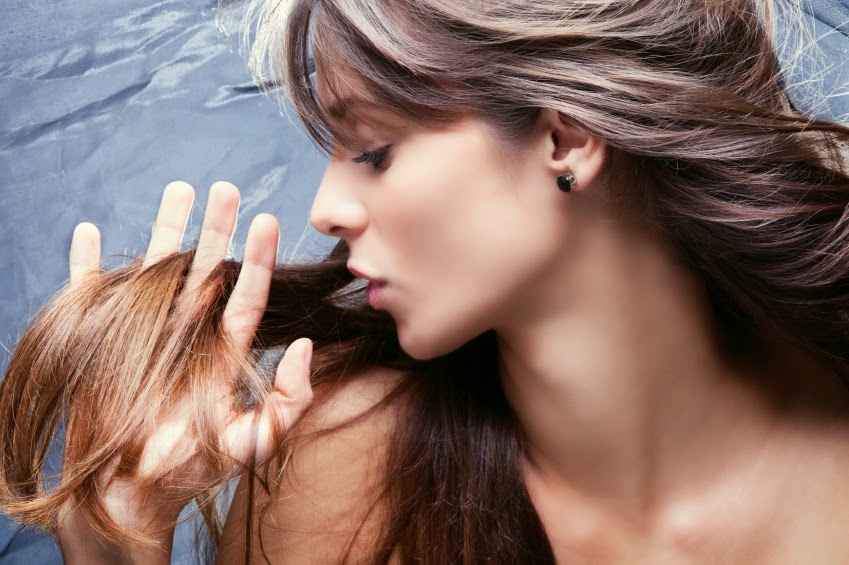WHAT IS CAUSING YOUR COWN FROM BEING FAR FROM LUSHES? WHAT IF WE TOLD YOU WE CAN REVERSE THE SIGNS OF HAIR LOSS? WOULDN'T YOU TAKE UP THE CHALLENGE?
LAVENDER OIL PROMOTES HAIR GROWTH. Ylang Ylang Oil REDUCES HAIR LOSS.
Hair Facts
 |
| Add 2-3 drops of The Little Essentials 100% Pure French Lavender to your shampoo to promote healthy hair growth. It makesyour hair smell great too. |
Hair is a string of dead cells
An adult looses about 100 stands a day. Buts its ok, we have about 120,000 strands.
Hair grows about 6 inches a year
There is hair on every part of your body except our palms and the soles of our feet. Some are so fine, they are practically invisible to the naked eye.
Hair Growth
Hair is made of a protein called keratin that is produced in hair follicles. As follicles produce new hair cells, old cells are being pushed out through the surface of the skin.
At any one time, about 90% of the hair on a person's scalp is growing. Each follicle has its own life cycle that can be influenced by age, disease, and a wide variety of other factors. This life cycle is divided into three phases:
Anagen - active hair growth that lasts between two to six years
Catagen - transitional hair growth that lasts two to three weeks
Telogen - resting phase that lasts about two to three months. The hair strand falls out at the end of the resting phase but a new strand begins to grow.
Reasons For Hair Loss
As people age, their rate of hair growth slows.
There are many types of hair loss (alopecia) :
Involutional alopecia - hair gradually thins with age. More hair follicles go into the resting phase, and the remaining hairs become shorter and fewer in number.
Androgenic alopecia - a genetic condition that can affect both men and women. Men with this condition, called male pattern baldness, can begin suffering hair loss as early as their teens or early 20s. It's characterized by a receding hairline and gradual disappearance of hair from the crown and frontal scalp. Women with this condition, called female pattern baldness, don't experience noticeable thinning until their 40s or later. Women experience a general thinning over the entire scalp, with the most extensive hair loss at the crown.
Alopecia areata - causes patchy hair loss in children and young adults. This condition may result in complete baldness (alopecia totalis). In about 90% of people with the condition, the hair returns within a few years.
Alopecia universalis - all body hair to fall out, including the eyebrows, eyelashes, and pubic hair.
Trichotillomania - is a psychological disorder in which a person pulls out their own hair.
Telogen effluvium - is temporary hair thinning over the scalp that occurs because of changes in the growth cycle of hair. A large number of hairs enter the resting phase at the same time, causing hair shedding and subsequent thinning.
Causes Of Hair Loss
Doctors don't know why certain hair follicles are programmed to have a shorter growth period than others. However, several factors may influence hair loss:
- Hormones, such as abnormal levels of androgens (male hormones normally produced by both men and women)
- Genes, from both male and female parents, may influence a person's predisposition to male or female pattern baldness.
- Stress, illness, and childbirth can cause temporary hair loss.
- Ringworm caused by a fungal infection can also cause hair loss.
- Drugs, including chemotherapy drugs used in cancer treatment, blood thinners, beta-adrenergic blockers used to control blood pressure, and birth control pills, can cause temporary hair loss.
- Burns, injuries, and X-rays can cause temporary hair loss. In such cases, normal hair growth usually returns once the injury heals.
- Autoimmune disease may cause alopecia areata. In alopecia areata, the immune system revs up for unknown reasons and affects the hair follicles. In most people with alopecia areata, the hair grows back, although it may temporarily be very fine and possibly a lighter color before normal coloration and thickness return.
- Cosmetic procedures, such as shampooing too often, perms, bleaching, and dyeing hair can contribute to overall hair thinning by making hair weak and brittle. Tight braiding, using rollers or hot curlers, and running hair picks through tight curls can also damage and break hair. However, these procedures don't cause baldness. In most instances hair grows back normally if the source of the problem is removed. Still, severe damage to the hair or scalp sometimes causes permanent bald patches.
- Medical conditions. Thyroid disease, lupus, diabetes, iron deficiency, and anemia can cause hair loss, but when the underlying condition is treated the hair will return.
- Diet. A low-protein diet or severely calorie-restricted diet can also cause temporary hair loss.

 NATURAL vs SYNTHETIC
NATURAL vs SYNTHETIC